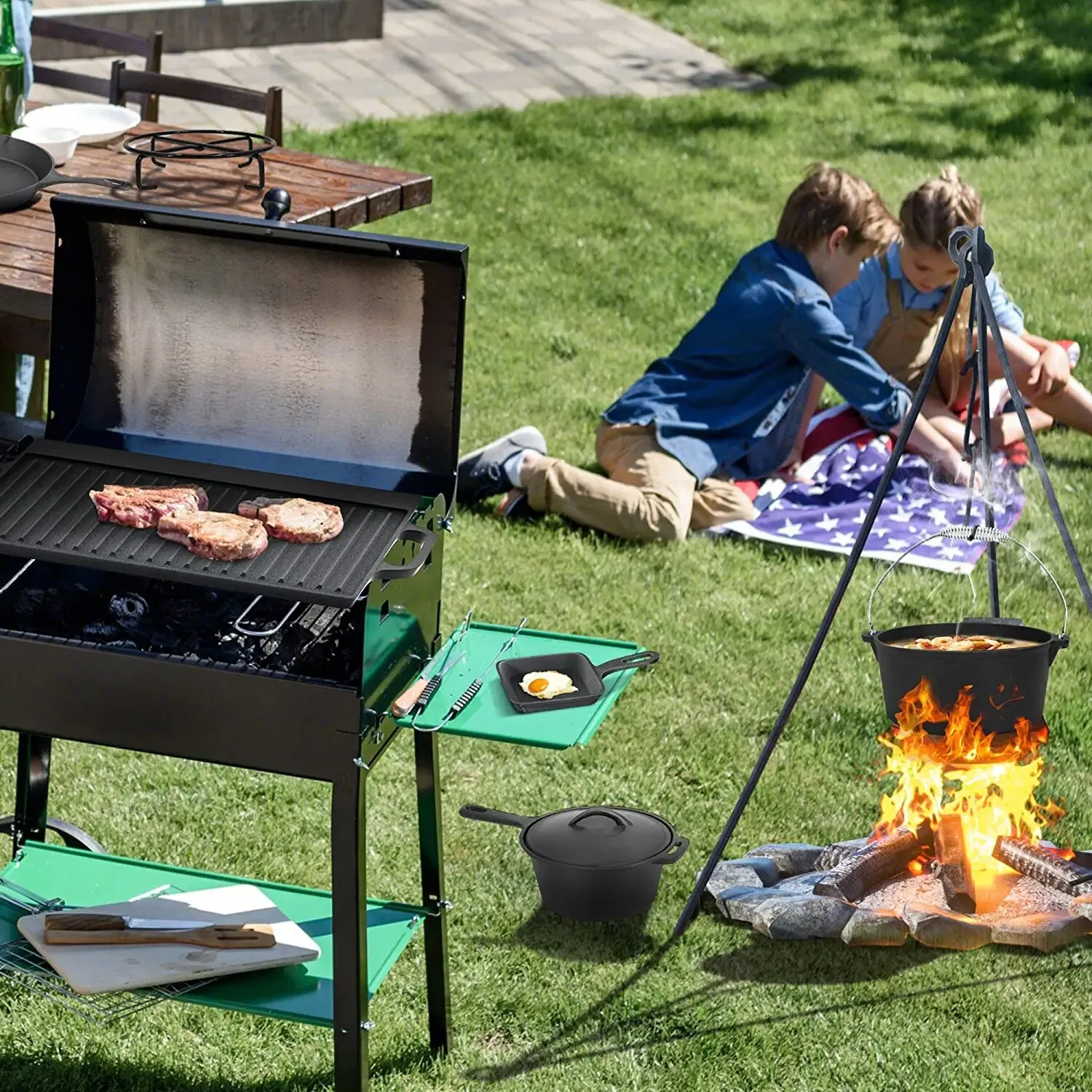
Restoring Your Cast Iron Skillet for Better Cooking and Longevity
Fixing Your Cast Iron Skillet A Comprehensive Guide
Cast iron skillets are a beloved staple in kitchens around the world. Renowned for their durability and excellent heat retention, these versatile cooking tools can last a lifetime, if properly cared for. However, over time, even the most well-loved cast iron skillets can require some fixing. Whether it’s dealing with rust, a troublesome non-stick surface, or simply needing a good cleaning, this guide will walk you through how to revive your cast iron masterpiece.
Understanding Cast Iron Skillets
First, let’s understand what makes cast iron skillets unique. Cast iron is a porous material that can absorb flavors and heat evenly across its surface, resulting in beautifully cooked dishes. The magic lies in the seasoning – a layer of polymerized oil that provides a natural non-stick surface and protects the skillet from rust. When cared for properly, this seasoning improves over time. However, harsh cleaning methods and improper storage can damage it, leading to potential issues.
Common Problems and Solutions
1. Rust
One of the most common problems with cast iron skillets is rust. Rust occurs when the skillet is exposed to moisture without proper seasoning. Fortunately, rust can be removed!
- Removal Process Start by scrubbing the rusty areas with steel wool or a stiff brush until the rust is completely gone. You may need to use some mild soap during this process, although it's generally advised to avoid soap as it can strip the seasoning.
- Re-seasoning After you’ve tackled the rust, it's time to re-season the skillet. Rinse it thoroughly and dry it completely. Preheat your oven to 350°F (175°C). Apply a thin layer of vegetable oil or flaxseed oil to the entire surface, including the handle. Place the skillet upside down in the oven (to avoid pooling oil) and bake it for one hour. Turn off the oven and allow the skillet to cool inside.
2. Residue Build-up
Sometimes, cooking residues can accumulate and create a sticky surface that detracts from your cooking experience.
- Cleaning To clean a sticky skillet, first, you can use a coarse salt to scrub the surface with a bit of water
. This method helps lift off most residues without removing too much seasoning.fixing cast iron skillet

- Deep Cleaning If the stickiness persists, you might need to deep clean. Use a mixture of baking soda and water to create a paste and scrub the skillet gently. After cleaning, rinse well and dry it thoroughly. Don’t forget to reapply a thin layer of oil before storing.
3. Improper Seasoning
If your skillet has lost its non-stick surface, it may need re-seasoning.
- Steps to Re-season Start with a clean pan. If there’s any old food residue or rust, clean thoroughly. Apply a very thin layer of oil (vegetable oil or a similar product works best) to the skillet, making sure to cover all surfaces, including the bottom. Place it upside down in the oven and bake at 400°F (204°C) for an hour, then let it cool completely in the oven.
Best Practices for Maintenance
To minimize issues and keep your skillet in top shape, consider these tips
- Avoid Soaking Never soak your cast iron skillet in water. It can lead to rusting. - Use Minimal Soap While it's generally best to avoid soap entirely, a small amount is acceptable if used sparingly.
- Dry Immediately After cleaning, dry your skillet promptly, and apply a light coating of oil to preserve the seasoning and prevent rust.
- Store Properly Store the skillet in a dry place. You can place a paper towel inside to absorb excess moisture.
Conclusion
Fixing and maintaining a cast iron skillet might seem daunting at first, but with a little practice and attention, you can ensure that your skillet remains a cherished and functional part of your kitchen for generations to come. Through cleaning, re-seasoning, and proper storage habits, your cast iron skillet will continue to deliver delicious meals, showcasing the unique flavors that can only be achieved through this time-tested cookware. Happy cooking!
-
Season Cast Iron Perfectly with GPT-4 Turbo TipsNewsAug.01,2025
-
High Quality Cast Iron Cookware - Baixiang County Zhongda MachineryNewsAug.01,2025
-
Premium Cast Iron Pan: Durable & Perfect HeatNewsAug.01,2025
-
High Quality Kitchen Durable Black Round Cast Iron Cookware Pancake Crepe Pan-Baixiang County Zhongda Machinery Manufacturing Co., Ltd.NewsAug.01,2025
-
Cast Iron Cookware - Baixiang County Zhongda Machinery | Nonstick, Heat ResistanceNewsAug.01,2025
-
High Quality Kitchen Durable Black Round Cast Iron Cookware - Baixiang County Zhongda Machinery | Non-Stick, Heat Retention, DurableNewsJul.31,2025


